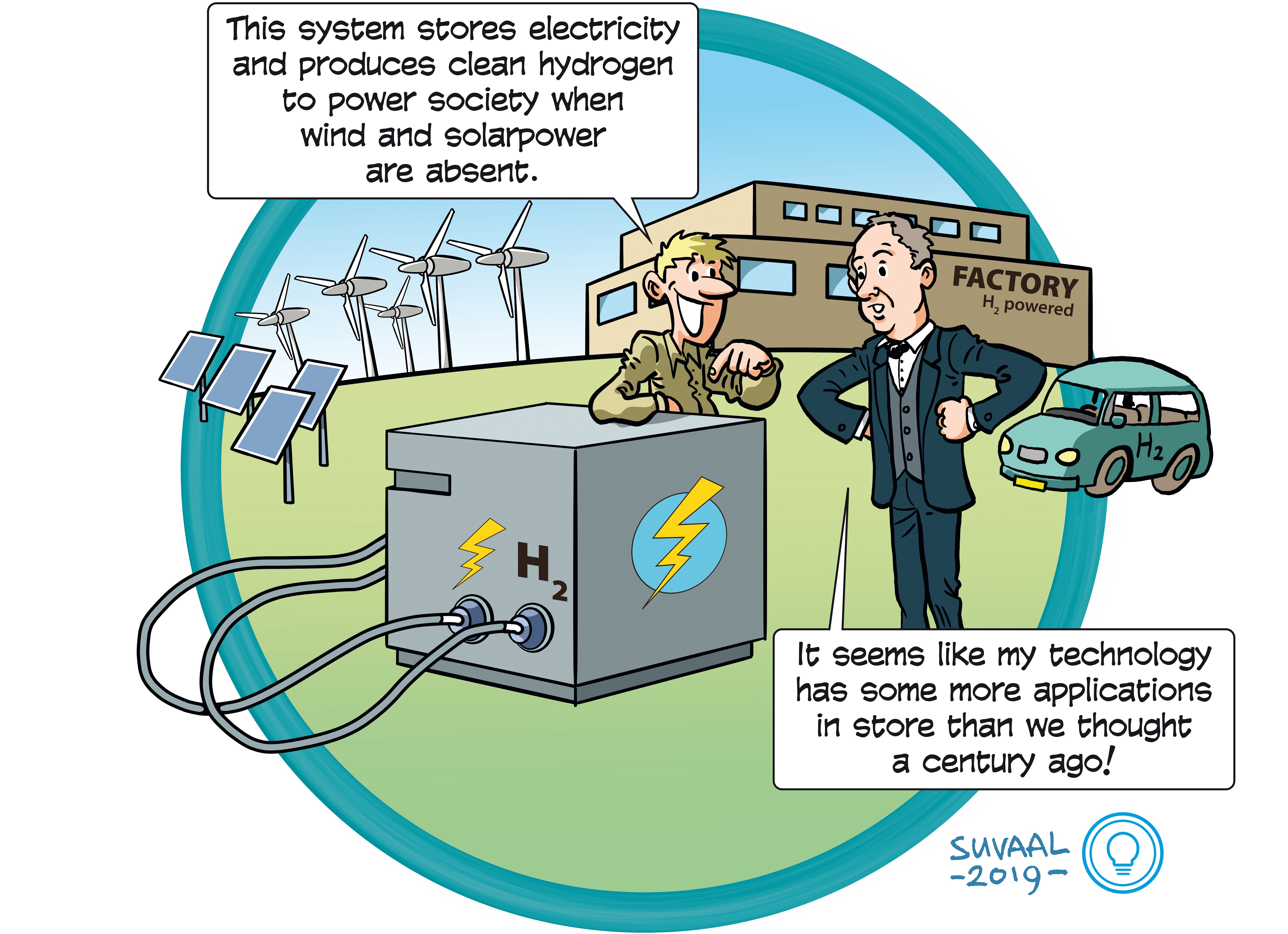Battolyser; combining electricity storage and conversion
Themes: Energy, Chemistry, bio- & process technology


A TRL is a measure to indicate the matureness of a developing technology. When an innovative idea is discovered it is often not directly suitable for application. Usually such novel idea is subjected to further experimentation, testing and prototyping before it can be implemented. The image below shows how to read TRL’s to categorise the innovative ideas.
Summary of the project
To meet the demand for more sustainable energy more and more wind turbines and solar panels are being built and put into place. When the sun is shining bright and there is a strong wind these systems produce a lot of electricity and at night or moments with less wind these systems produce less to no energy. The challenge of this type of electricity generation is therefore that it is not constantly available and that the electricity has to be used immediately. It is desirable to find means to store this electricity to match usage throughout the year. The research is developing a unique system in which sustainable electricity can be stored for both the short- (day and night) and long-term (weekly & seasonal) usage.
The novel system consists of a Ni/Fe battery which can store renewable energy for the short term use, integrated with an alkaline electrolyser. The unique feature of this battery system is that when the battery is fully charged the integrated system starts splitting water molecules into H2 and O2 via electrolysis. The H2 can be stored and used for electricity production on the longer terms. Advanced tests of the system even have shown that the integrated system performs better overall than the individual battery and electrolysis functions separately. The materials used, its efficiency and robustness, and the fact that two applications are combined render the battolyser competitive with other electricity storage applications.
What's next?
This technology has formed the basis for the creation of a Spin-off company, Battolyser bv. Their next step is the realisation of a scaled-up facility in the Eemshaven which should be operational by half 2019, and subsequent further scale-ups.
Dr. Fokko Mulder
